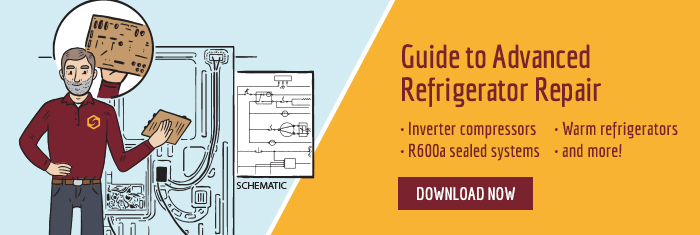One Magic Trick to Instantly Identify Sealed System Problems
One of the first steps when you're troubleshooting a warm temperature proble in both compartments of a refrigerator should always be to identify whether you're dealing with a problem in the sealed system or with a problem elsewhere in the unit.
The go-to method for most techs is to get eyes on the evaporator coils. While the frost pattern there can tell you a lot of things about the health of the refrigerator, it has a massive drawback: getting to the evaporator can require a lot of non-trivial disassembly, including emptying the entire compartment.
There has to be an easier, smarter way to identify a sealed system problem right?
Of course there is! All you have to do is take a temperature reading on the condenser coils. It's that simple. Or rather, it's that simple if you know your thermodynamics.
To perform this test, you'll want to get an accurate temperature reading on the middle of the condenser coils, since that's where the refrigerant is at saturation. If you can get this with an IR gun, great; if not, you can use thermocouples. In a healthy system, you should measure at least 20F above the ambient temperature. A reading of less than that 20F temperature split indicates that you have a sealed system problem without any doubts.
A reading of a 20F or larger temperature split suggests that the sealed system is working within spec, but it does not prove it. Think of this test like an ohms measurement -- if the measurement results are out of spec, you know it's bad. If they're in spec, you don't necessarily know anything, and further testing is required.
So there you have it: one easy, nifty little test that lets you positively identify a sealed system issue with minimal disassembly. Want to learn more about how to troubleshoot refrigerators and sealed systems like a wizard? Check out our refrigerator repair course over at Master Samurai Tech.
If you're a premium member at Appliantology, you can also enrich your thermodynamical know-how by watching our series of webinars on the subject. Click here to watch: https://appliantology.org/announcement/33-webinar-recordings-index-page/
-
.png) 6
6
-
 1
1






5 Comments
Recommended Comments